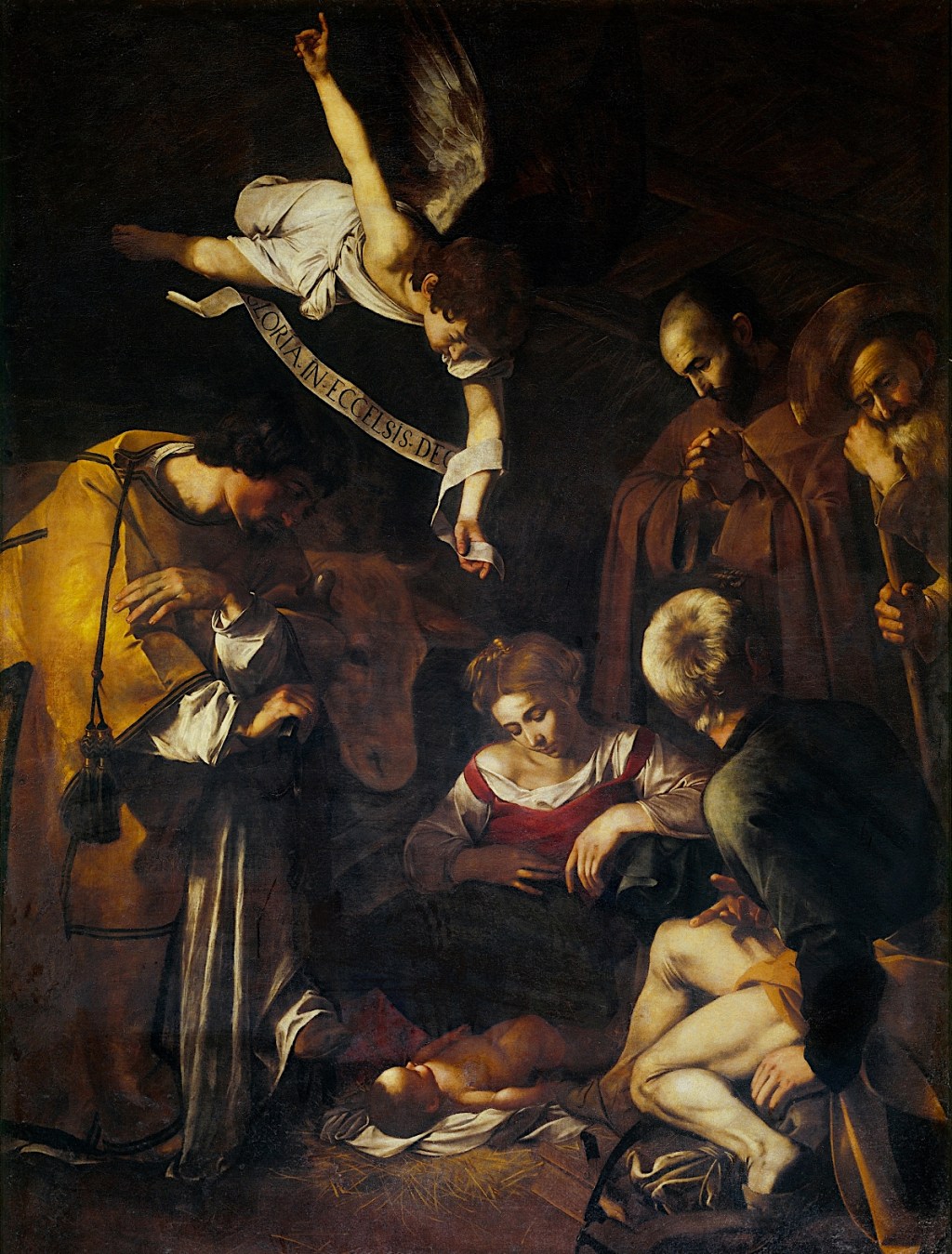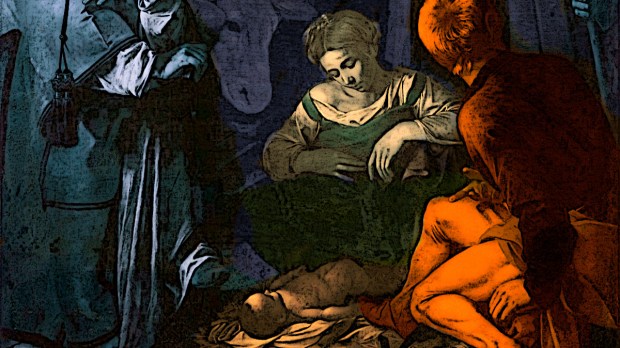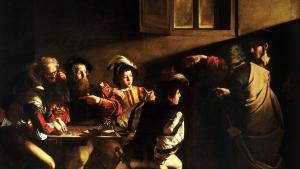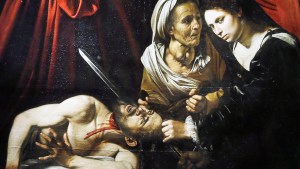In the year 1609 in Palermo, Italy, Michelangelo Merisi, known as Caravaggio, painted a picture. It was a Nativity scene for a church, the Oratory of St. Lawrence. Caravaggio was a painter, to be sure, so it makes sense he would paint a picture, but his career as a religious artist always seemed odd to me seeing as how his life was basically one long crime-spree. All his life, he was in trouble – fighting over women, fighting in the street, in debt, failing to deliver paintings for which he’d already been paid.
Caravaggio even allegedly murdered a man in Rome, which is how he ended up in Palermo. After escaping from the law in Rome, he got into another tight spot on the island of Malta and again was on the run. He ended up hiding out in Palermo.
Wherever he went, Caravaggio was always painting gorgeous, heartfelt, sacred art.
A sacred Nativity
For centuries, his Nativity with St. Francis and St. Lawrence hung over an altar in the Oratory. Although Caravaggio clearly put all his effort into the painting, it wasn’t merely a museum-quality collector’s item. It was sacred art, meant to be actively used in the devotional life of the Church. The Nativity is depicted with sensitivity and empathy. I can only imagine it focused the mind and heart of generations of priests who stood at that altar to pray.
It seems that the bad character of the artist wasn’t obstacle enough to keep him from creating sincere works of beauty. I don’t know what was in Caravaggio’s heart, if he was ashamed of the kind of life he led or had any regrets. But I would argue that no matter the sins on his conscience, his artwork reveals him to be a believing Catholic who really did strive to make places of worship beautiful. This was his gift to the Church.

Theft in the night
Nevertheless, it’s quite a twist of fate that in 1969, his Nativity painting was stolen in the middle of the night. It’s the sort of crime that Caravaggio himself might have committed if he hadn’t been the artist. The painting has been lost ever since. Cut from its frame with precision by criminals who have never been caught, it was probably rolled up and reassembled somewhere else. Rumor has it the mafia was involved. No one really knows, though. For decades, the frame over the altar remained empty, perhaps in the hope the painting would be recovered and returned. Over time, however, hope dimmed, and a replica of the painting was installed.
The backstory of the painting is a tale of human greed and lawlessness. The painting itself tells a completely different kind of story, one of sacrificial love. It’s significant that it was commissioned to hang over an altar, a place of sacrifice and the place where Christ unites himself to humanity in the Blessed Sacrament. How appropriate that the scene depicted is the Nativity, because it was on Christmas that Christ first united humanity to himself. Every Mass, no matter the time of year, participates in the mystery of Christmas, the entrance of Christ into the world.
Like a bolt of lightning
When I look at the picture, the first thing I notice is the heavy shadows of textured brown. From the dense darkness, the figures dramatically emerge in a bright light. Caravaggio is well-known for this technique of extreme shifts from light to dark, called chiaroscuro, but that doesn’t make his accomplishment in this particular painting any less impressive. The scene isn’t kitschy or overly sentimental. No, Caravaggio makes clear that Christmas is a magnificent, stunning event. Christ arrives in darkness like a lightning bolt.
From the shadows an angel emerges. He is holding a banner reading Gloria in Excelsis Deo, the words of the song that resounded in the midnight sky on the lips of a host of angels. Remember that Christ was born in the middle of the night, so the light in the sky is entirely due to the glory of the Christ child and his Heavenly Father.
The source of light is from the upper left, somewhere outside the frame of the canvas. Notice how the infant’s face is brightly lit as he stares into the sky. It’s almost as if he’s looking to his Heavenly Father (and if he didn’t quite know where to look, the angel is helpfully pointing out the direction). The Father’s gaze meets his in a flash of light.
Christmas is a new beginning
If, in the beginning, God said let there be light and his word resulted in the creation of the universe, in the Nativity there’s also light because Christmas is another type of beginning. Christ, the Word, has entered the world and his arrival makes possible a new life, the re-creation of the human heart.
Most of the other faces in the picture are heavily shadowed. The exception is the Blessed Virgin Mary whose countenance glows with motherly love. She is looking down, away from the light source. And yet, her face is bright. It seems to me that she is actually glowing with the light of Christ which is reflecting onto her. She is the moon and Christ the sun.
Still, for all the love and devotion that pervades the scene, Christ is vulnerable. No one is holding him. He is not yet wrapped in swaddling clothes. He is lying, essentially, in the dirt on the floor of a dark cave. Even the golden straw below him is laced into the dirt. These details introduce a hint of death and loss into the scene.
Christ, who is loved so much by those gathered around, is not long for this world. He is born to die, to disappear into the grave.
It’s ironic, then, that the painting has been physically lost for so long, a victim of crime. Perhaps it’s merely hiding away and biding its time before emerging into view again, resurrected from wherever it has been laid low, a glowing, luminous work of beauty.



